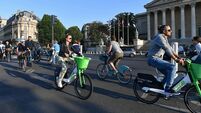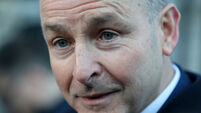More walkers on our mountains mean more rescues
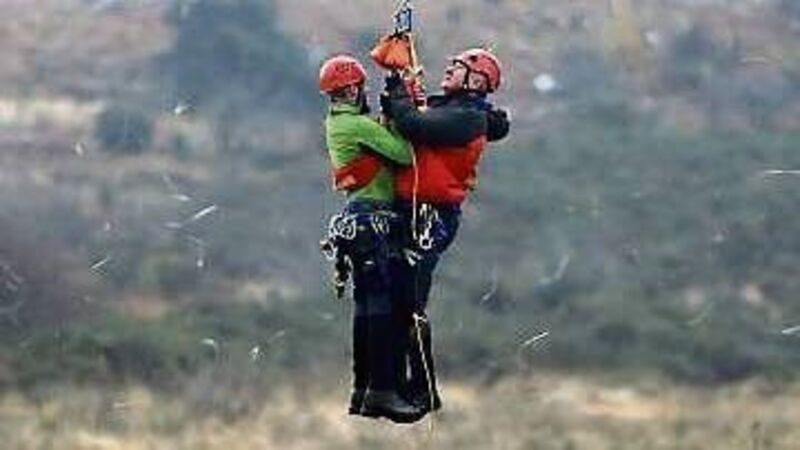
In early summer, a man climbed Ben Nevis, which is Scotland’s highest mountain, without raingear and then got soaked on the summit.
He contacted the local Lochaber Mountain Rescue for assistance saying he was too wet to go on.
They refused assistance, with team leader John Stevenson explaining: “We are not here to go up and walk down somebody who is ok but just wet. If he’s wet, he’s wet. He can come off himself. We are volunteers, not full-time professionals.”
While there are no reports of Irish mountain rescue teams refusing to respond to a callout, the pressure is undoubtedly growing on volunteers, sometimes from individuals who see mountain rescue not as a last, but as a first, resort when a problem arises.
Certainly, there has never been more recourse to the Irish uplands. In 2003, the number of visitors to Ireland participating in hillwalking or hiking was 168,000; in 2016, the figure was almost 2.1m.
Applying average spending by overseas tourists to the latter figure suggests the market segment is worth at least €1.25bn to the Irish economy, without taking account of revenues from domestic hikers.
The continuation of this revenue source is, however, heavily dependent on future goodwill from frontline Irish Mountain Rescue teams who give up work, family and leisure time to respond on a 24-hour, 365-day basis.
In 2017, there were 272 callouts involving 12 fatalities and 154 injuries, with 77 of these taking place during darkness.
Mountain rescue is clearly a disciplined, demanding and sometimes harrowing endeavour. Hillwalkers and the tourism industry in Ireland are most fortunate that unpaid volunteers are happy to provide a rescue service without even receiving travel expenses when responding to a call-out.
In recent months, however, there has been a noticeable increase in the number of requests for assistance and this has put added pressure on the volunteer teams.
Kerry Mountain Rescue Team (KMRT) responded to 10 call-outs just for the month of June, while the Glen of Imaal Rescue Team in Wicklow was called out six times on a particularly sunny Saturday.
According to KMRT spokesman Colm Burke, team members have observed that a high proportion of the recent callouts have involved parties who were ill-prepared and or ill-equipped for their ventures into the mountains.
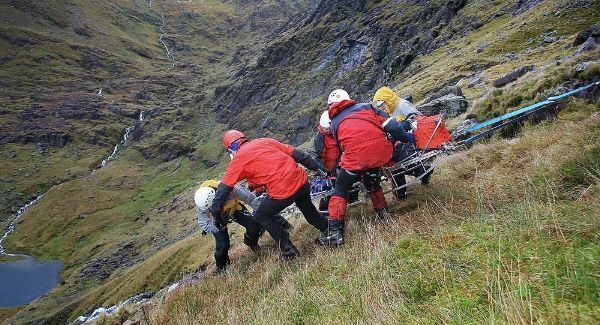
“The excellent weather conditions this summer have no doubt attracted higher numbers of visitors to the mountains at this time, but not all are sufficiently experienced for the challenges they undertake.
“The team would advise those venturing out to ensure that they are sufficiently experienced, prepared and equipped for any hike or climb they are planning.”
An interesting fact from 2017 is that, while the majority of call-outs to the 11 teams were to upland injuries, 31% were to walkers who had simply become lost. While some injuries arise to walkers not prepared for the mountain environment — for example, not wearing the correct footwear — most injuries occur by mischance in what is a challenging and unpredictable environment. This is not, however, the case for those who become lost; this outcome often suggests a lack of preparation.
The newly introduced Sarloc smartphone application now enables rescuers to pinpoint the location of individuals who are seeking assistance, but since it requires an internet signal it does not always work. The alternative of a manual sweep is then one of the most labour intensive and demanding tasks that can face a mountain rescue team.
Alan Wallace is an experienced rescuer with KMRT. He believes those heading out onto the Irish mountains should plan their route in advance and have the skills to navigate competently even in the poorest of conditions. “Many accidents occur when walkers stray off the trail and onto the steep ground and then become crag fast (unable to move up or down), but competent navigation skills should keep walkers on the route.”
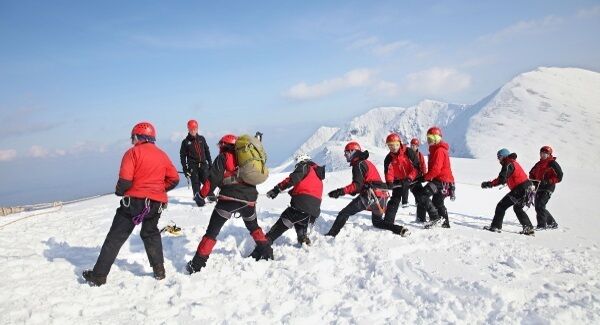
He also believes the nature of mountain rescue is changing: “In the past mountain rescue teams were called out when someone failed to return from the hills. This very often involved a night search. Now with mobile phones, we can become aware of an incident soon after it happens, but we are often hampered when the phone battery quickly dies. It is important that hillwalkers keep their phone charged at all times and if they are taking photographs and scrolling maps that they have a portable phone charger with them in case of emergency.”
But what happens when internet and mobile technology doesn’t work. In such circumstances, Mr Wallace believes walkers must be self-reliant.
“They should have sufficient spare food, protective clothing and torches to stay out safely after dark and at least one person in a party should carry a map and compass they know how to use.”
Further information on all aspects of upland safety: kerrymountainrescue.ie/ mountainsafety








